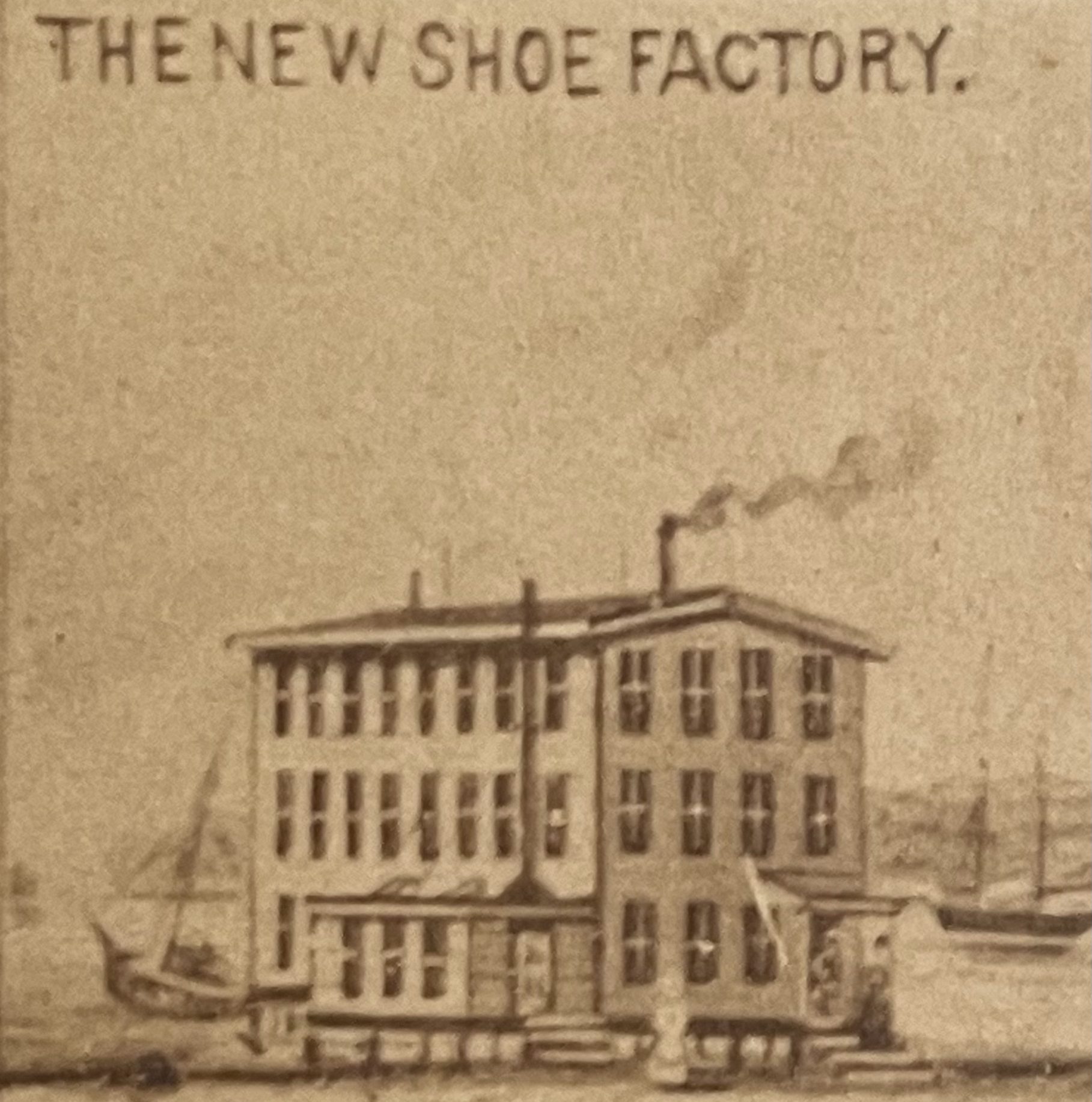Setauket Rubber Factory
Edward Lange (1846-1912), The Setauket Rubber Factory, n.d., Watercolor and India ink on paper, 3.9375 x 6.6875 in. (unframed), Long Island Museum, Gift of Mr. and Mrs. Ward Melville, 1976, 1976.017.0057
In 1876 the Long Island Rubber Company purchased several industrial buildings from the Nunn's piano factory. Initially, the company met with failure that left its stockholders with crippling losses. After reorganization as the L.B. Smith Rubber Company, under the management of J.W. and Eldwin Elbertson, it began to boom. The rubber factory employed nearly seven hundred people, many of whom were Eastern European Jews recently immigrated to the United States. According to an April 1888 newspaper article, these workers turned out over 9,000 pairs of rubber-soled shoes and boots per day.
For a time, the rubber factory brought economic prosperity to Setauket and the surrounding area. At its height, its payroll accounted for over $4,500 per week—money that largely found its way into the accounts of local businesses. As a central feature of the community, Lange painted this small watercolor and gouache rendering of the factory to include alongside a collection of other buildings and views in Setauket. After completing each smaller painting, the artist pinned them together on a board and photographed the entire collage. He then printed the albumen photograph above from his glass-plate negative. Notice the view of the rubber factory positioned in the center of the bottom row.
(above) Edward Lange, (1846-1912) [Artist], Port Jefferson, L.I, 1886, Albumen print, 8.125 x 11 (unframed), Port Jefferson Historical Society, 2014.001.1230
 The Elbertsons also invested in factories located in Northport, Greenport, and Port Jefferson. In another albumen photographic print created sometime after 1886, one of them appears in the bottom left corner. This smaller manufactory employed sixty workers who crafted leather shoes. All in all, the factories the Elbertson's managed produced $1.5 million worth of goods each year. These sites constantly hummed, literally and figuratively, with the motion of machinery, people, raw materials, and finished goods. Coal arrived in large quantities—7,000 pounds annually—to power the factories' machinery. Shipments of imported rubber, leather, metal, and thread found their way en masse to the factory, destined to depart in finished pairs of footwear. Even loads of wood were in high demand. The Setauket rubber factory cut nine thousand feet of board per day to make packing boxes for their finished wares. All of this activity meant that the rubber company was a top customer of the Long Island railroad.
The Elbertsons also invested in factories located in Northport, Greenport, and Port Jefferson. In another albumen photographic print created sometime after 1886, one of them appears in the bottom left corner. This smaller manufactory employed sixty workers who crafted leather shoes. All in all, the factories the Elbertson's managed produced $1.5 million worth of goods each year. These sites constantly hummed, literally and figuratively, with the motion of machinery, people, raw materials, and finished goods. Coal arrived in large quantities—7,000 pounds annually—to power the factories' machinery. Shipments of imported rubber, leather, metal, and thread found their way en masse to the factory, destined to depart in finished pairs of footwear. Even loads of wood were in high demand. The Setauket rubber factory cut nine thousand feet of board per day to make packing boxes for their finished wares. All of this activity meant that the rubber company was a top customer of the Long Island railroad.
As recorded in The Long-Islander, "[The rubber factory's] shipments of finished goods aggregate over a car load a day and they receive one to two car loads of freight daily from the City or other points." Lange painted this line of the Long Island Railroad in 1875, pictured here traveling along a trestle bridge in Smithtown. Its schedule was intimately tied to the production of factories along the North Shore, like those the Elbertsons managed. Just like the inner workings of the manufactories they serviced, the Long Island Railroad's army of trains functioned like a machine spread across dozens of miles—linking hubs of production to their markets.





